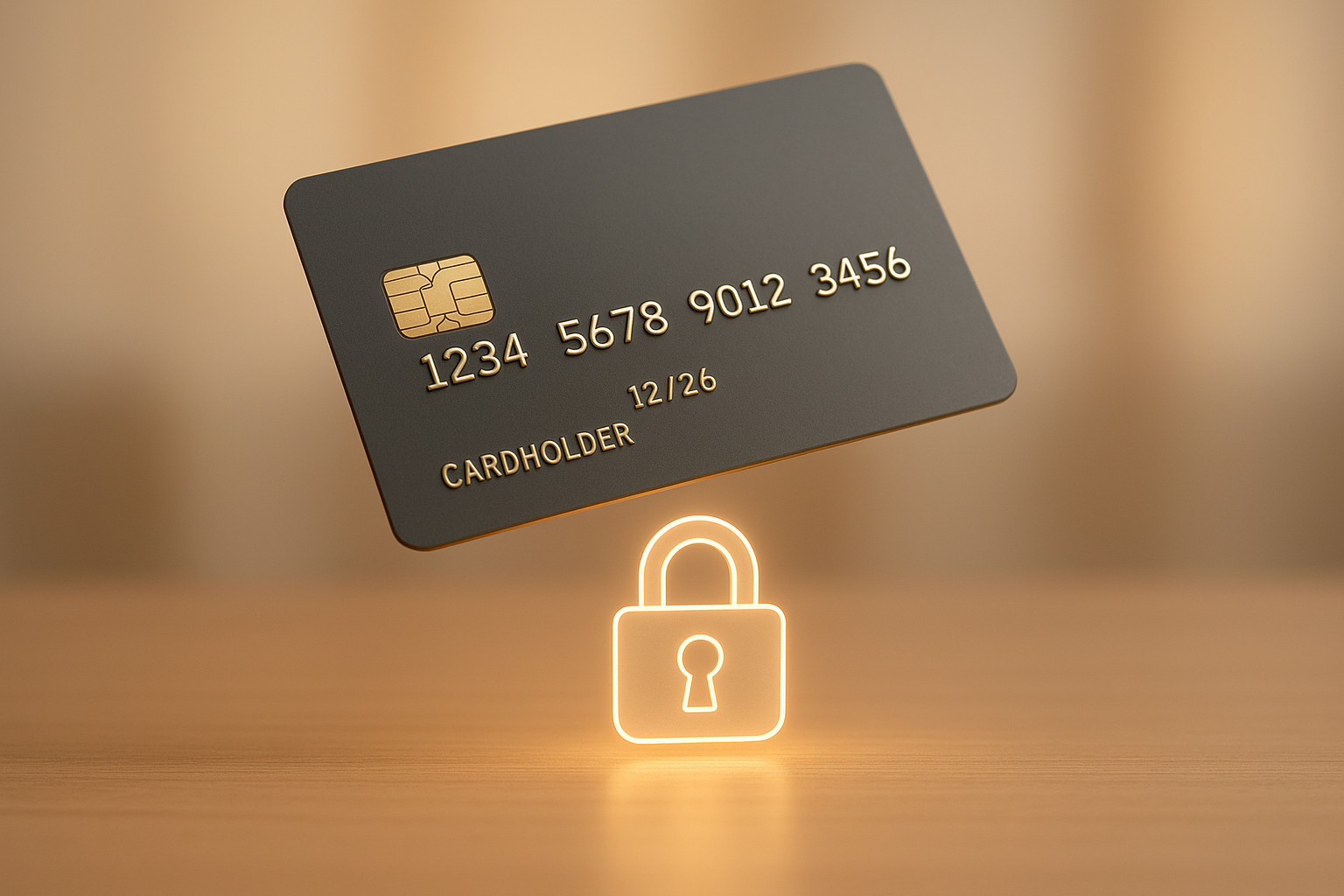3D Secure (3DS) is a security protocol designed to protect online card transactions by verifying the cardholder’s identity. It reduces fraud, improves transaction security, and shifts liability for fraudulent chargebacks from merchants to issuing banks. Here’s what you need to know:
-
How It Works: 3DS involves three domains – merchant’s bank, cardholder’s bank, and card networks (like Visa or Mastercard). It uses methods like biometric authentication, one-time passcodes, and risk-based analysis to ensure secure payments.
-
Benefits:
-
40% reduction in fraud losses.
-
70% fewer cart abandonments with 3DS2.
-
95% of transactions processed without friction.
-
-
3DS Versions:
-
3DS 1.0: Outdated, caused redirects and poor user experiences.
-
3DS 2.0: Mobile-friendly, supports biometrics, and shares 10x more data for better fraud prevention.
-
-
Adoption: 82% of merchants use 3DS, helping reduce card-not-present fraud significantly.
For businesses, 3DS not only protects against fraud but also builds trust with customers by ensuring secure and smooth online transactions.
3D Secure Process
The 3D Secure process plays a key role in ensuring secure payment transactions, offering protection for both merchants and customers against fraud. This system operates using a three-domain model that seamlessly integrates multiple parties to verify and authenticate transactions.
Core Components
The 3D Secure framework is built on the collaboration of three distinct domains:
| Domain | Description | Role |
|---|---|---|
| Acquirer Domain | The merchant’s bank and payment systems | Handles the initiation of transaction verification and processes payments |
| Issuer Domain | The cardholder’s bank and authentication systems | Confirms the cardholder’s identity and authorizes the transaction |
| Interoperability Domain | Card networks like Visa and Mastercard | Ensures secure communication between the acquirer and issuer |
These domains communicate using XML messages transmitted over SSL connections. This setup includes digital certificates to confirm the identities of all participants involved in the transaction process.
Authentication Steps
The 3D Secure process follows a structured series of steps to maintain transaction security:
-
Transaction Initiation
When a customer enters their card details on a merchant’s checkout page, the system begins collecting data for risk evaluation. -
Risk Analysis
The system reviews various risk factors to determine whether additional verification is necessary, balancing security with a smooth user experience. -
Authentication Decision
Based on the risk assessment, the system either allows the transaction to proceed without interruption for low-risk cases or prompts additional verification for higher-risk situations.
Security Methods
Modern implementations of 3D Secure rely on a variety of authentication methods to protect transactions while keeping the process user-friendly:
| Authentication Type | Implementation | User Experience |
|---|---|---|
| Biometric | Fingerprint or facial recognition | Quick and seamless verification via mobile devices |
| One-Time Passcode | Sent via SMS or email | A short code provided to a registered contact for confirmation |
| Push Notification | Mobile app-based authentication | Users approve or deny transactions with a simple action |
This layered approach has proven to be highly effective. In fact, approximately 95% of 3D Secure transactions are completed without any friction. As card-not-present transactions are expected to surpass card-present ones by 2023, this system is well-positioned to meet the growing demand for secure online payments.
3D Secure Updates: 1.0 to 2.0
The transition from 3D Secure 1.0 to 2.0 brought significant changes to improve the checkout experience. The earlier version, 3D Secure 1.0, often disrupted the payment process by redirecting users to external pages, leading to confusion and increased cart abandonment rates. Let’s break down the main issues with 1.0 and how 2.0 addresses them.
3D Secure 1.0 Issues
3D Secure 1.0 had several shortcomings that impacted user experience and transaction success:
| Issue | Impact |
|---|---|
| Redirect Requirements | Redirecting users to external pages caused confusion and reduced trust. |
| Static Passwords | Enrollment passwords were difficult to manage, leading to failed transactions. |
| Non-optimized for Mobile | The interface was not designed for mobile devices, creating a poor experience. |
| Limited Data Exchange | Only 15 data elements were shared, limiting fraud detection capabilities. |
3D Secure 2.0 Updates
3D Secure 2.0 introduces risk-based authentication and significantly enhances data sharing, with more than 150 data elements available for analysis. These updates are designed to provide a smoother, more secure payment experience.
| Feature | Benefit |
|---|---|
| Biometric Authentication | Supports fingerprint and facial recognition for quicker, more secure verification. |
| Mobile-First Design | Optimized for both mobile browsers and in-app payments, improving usability. |
| Risk-Based Analysis | Allows low-risk transactions to proceed without interruptions. |
| Enhanced Data Sharing | Offers 10 times more data points, enabling better fraud prevention. |
These updates make the payment process not only faster but also more secure and user-friendly.
Fraud Prevention Results
The improvements in 3D Secure 2.0 have delivered measurable results. According to Visa, fraud rates have dropped by 40%, while checkout times have been slashed by 85%, significantly reducing cart abandonment rates by 70%.
| Metric | Improvement |
|---|---|
| Checkout Time | 85% faster processing times. |
| Cart Abandonment | 70% fewer abandoned carts. |
| Authentication Success | Fewer than 5% of transactions are flagged as high-risk. |
| Data Analysis | A 10x increase in data points enhances security assessments. |
These figures underline how the improved authentication process and expanded data capabilities of 3D Secure 2.0 contribute to better performance and a smoother user experience.
Business Advantages
3D Secure, with its solid technical foundation, offers businesses a range of benefits that go beyond just secure transactions. It helps reduce risks, cut losses from fraud, and improve the reliability of payments.
Fraud Protection
One of the standout features of 3D Secure is its ability to combat fraud effectively. By adding an extra layer of verification during transactions, it significantly reduces unauthorized use.
| Protection Metric | Impact |
|---|---|
| Fraud Loss Reduction | 40% decrease |
| Authentication Success Rate | 95% frictionless |
Chargeback Protection
Another major advantage is the shift in liability for fraudulent chargebacks. When a transaction is authenticated successfully through 3D Secure, the responsibility for chargebacks due to fraud moves from the merchant to the issuing bank
"For payments that successfully pass the issuing bank’s 3DS authentication flow, the issuing bank takes on liability for chargebacks due to fraud."
Customer Security
3D Secure not only protects businesses but also reassures customers. By verifying cardholder identities seamlessly during checkout, it enhances trust and ensures a smooth payment experience.
| Security Benefit | Result |
|---|---|
| Criminal Fraud Reduction | 82% decrease (post-SCA rollout) |
| Cart Abandonment | 70% lower than earlier versions |
| Transaction Success Rate | 95% completed without friction |
These advancements help businesses safeguard their financial interests while creating a trustworthy and seamless shopping environment for their customers.
sbb-itb-8c45743
Secured Payments 3D Secure Setup
Secured Payments simplifies the adoption of 3D Secure, ensuring transactions are both secure and smooth.
Payment Options
Secured Payments provides adaptable 3D Secure integration options to meet various business requirements.
| Business Type | Implementation Method | Key Features |
|---|---|---|
| E-commerce | API Integration | Direct shopping cart connection |
| Retail | Payment Gateway | Built-in 3DS support |
| Multi-channel | Hybrid Solution | Combined online/offline security |
The platform emphasizes EMV® 3D Secure 2.0 but will automatically revert to 3DS 1.0 if needed[16]. This flexibility ensures compatibility, even in high-risk scenarios.
High-Risk Business Solutions
Secured Payments goes beyond standard options to cater to the specific needs of high-risk merchants. It offers a robust set of authentication tools designed to enhance security:
-
Biometric verification
-
One-time passwords
-
Device fingerprinting
-
Risk-based authentication
These tools help high-risk businesses reduce fraud while staying compliant with Strong Customer Authentication (SCA) regulations.
Setup Process
Setting up 3D Secure with Secured Payments is straightforward and divided into three key steps:
-
Initial Configuration
-
Merchant account setup
-
Integration with the payment gateway
-
Management of technical configurations
-
-
Security Protocol Implementation
-
Two-factor authentication systems
-
Encryption protocols
-
Tokenization services
-
-
Testing and Deployment
-
Verifying authentication flows
-
Validating transaction processes
-
Testing system functionality
-
Note: 3D Secure adds an essential layer of protection to payment information, ensuring sensitive data remains secure during transactions.
Conclusion
Key Takeaways
3D Secure authentication has proven to be a game-changer for online transaction security. Since its implementation, criminal fraud chargebacks have dropped by an impressive 82% thanks to 3DS-based Strong Customer Authentication. The global market for 3D Secure payment authentication, valued at $1.10 billion in 2022, is projected to grow at an annual rate of 12.7% through 2030.
In regulated markets, 25%–50% of card-not-present transactions now use 3DS, reducing fraud rates by three to six times compared to standard transactions. Additionally, mandatory adoption of 3DS has led to a 47% drop in fraud pressure, further highlighting its effectiveness.
These statistics underscore the importance of adopting 3D Secure for businesses looking to reduce fraud and strengthen transaction security.
Taking the Next Step
The benefits of 3D Secure are clear, and implementing it should be a priority for businesses aiming to safeguard their operations. Partnering with Secured Payments can streamline this process. The platform supports a wide range of businesses, from traditional e-commerce to high-risk merchants, ensuring compliance and enhanced security.
To make the most of 3D Secure, focus on these key areas:
| Focus | Actions | Benefits |
|---|---|---|
| Integration | Connect with compatible e-commerce platforms | A smoother checkout experience |
| Security | Use multi-layer authentication | Stronger fraud prevention |
| Monitoring | Analyze transactions regularly | Improved performance |
Reach out to Secured Payments to explore customized 3D Secure solutions tailored to your business. With their expertise in fraud prevention and commitment to evolving security measures, adopting 3D Secure is a vital step to protect your customers and business in today’s fast-paced digital world.
FAQs
How does 3D Secure 2.0 make online payments easier and more secure compared to 3D Secure 1.0?
How 3D Secure 2.0 Enhances Online Payments
3D Secure 2.0 takes online payment security and convenience to the next level by introducing frictionless authentication and updated technology. Unlike its predecessor, 3D Secure 1.0 – which often required users to input a password on a separate page – this newer version supports modern methods like biometric authentication. Think fingerprint scans or facial recognition. It’s also designed to integrate seamlessly into checkout processes, cutting down interruptions and making transactions faster, especially on mobile devices.
Another standout feature is its use of advanced, real-time risk analysis to evaluate transactions. For purchases deemed low-risk, users can skip extra verification steps entirely. This not only speeds up the process but also helps reduce cart abandonment, creating a smoother experience for both shoppers and businesses. The result? A payment system that’s more secure and far less frustrating.
What are the benefits of using 3D Secure authentication for merchants?
3D Secure authentication brings several advantages to merchants, enhancing the safety and reliability of online transactions. By introducing an extra layer of security during payments, it helps cut down the risk of fraud, shielding businesses from unauthorized transactions.
Another major benefit is the liability shift. With 3D Secure in place, merchants are less likely to deal with chargebacks from fraudulent payments. This not only reduces costs but also provides a sense of reassurance. Plus, the added security can boost customer trust – shoppers are more likely to feel at ease knowing their payments are protected, which can translate into higher sales and stronger customer loyalty.
On top of that, adopting 3D Secure helps merchants stay compliant with industry security standards. It ensures they meet regulatory requirements while still offering a smooth and hassle-free payment experience for their customers.
What is risk-based analysis in 3D Secure 2.0, and how does it decide if extra verification is needed?
How Risk-Based Analysis Works in 3D Secure 2.0
Risk-based analysis in 3D Secure 2.0 relies on transaction data to gauge the potential for fraud. This data includes details like the purchase amount, device information, and the user’s behavior during the transaction. When the system evaluates the risk as low, the transaction is approved instantly, allowing the cardholder to complete their purchase without any extra steps.
On the other hand, if the system flags a transaction as potentially risky, additional authentication may be required. This could involve methods like entering a one-time password or using biometric verification. By adapting to the level of risk, this approach ensures a balance between strong security measures and a smooth shopping experience for genuine users.




